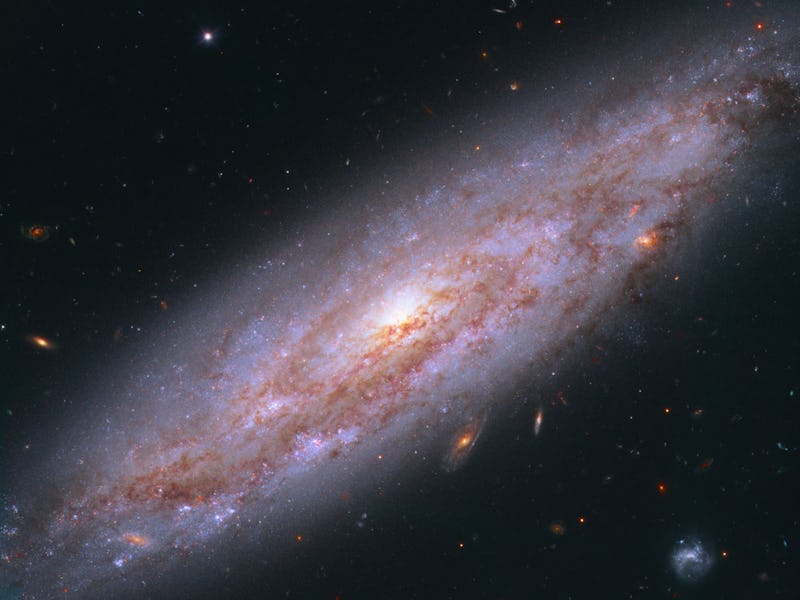New Hubble Data Shows "New Physics" At Work in Space
Astrophysics is never written in stone.

NASA’s Hubble Space Telescope is known to capture some of the most graceful images of deep space. Its findings are known to enchant space enthusiasts around the world, but its latest discovery could literally change the laws of physics as we know them.
On February 22, the Space Telescope and Science Institute (STScl) released a statement on their new research based on Hubble observations, which suggests the universe is expanding much faster than perviously thought. The researchers involved said that currently accepted rules of physics might need to be changed to explain what’s going on. Their findings have been accepted for publication in The Astrophysical Journal.
Join our private Dope Space Pics group on Facebook for more strange wonder.
Besides taking glamour shots of celestial objects, Hubble has the capability of measuring the distance to other galaxies by analyzing certain types of stars that regularly dim and brighten. These stars are known as Cepheid variables, and serve as beacons for astronomers to tell just how far away they are.
These new STScl findings focused on eight Cepheid variables in the Milky Way galaxy that were found to be ten times farther away than any observed star of its kind. They were so far away that the researchers had to make Hubble measure the stars’ position 1,000 times per minute in order to gather accurate data.
NGC 3972 (left) and NGC 1015 (right), are 65 million and 118 million light-years from Earth, respectively. Both possessed pulsating stars called Cepheid variables that let researchers determine the distance to the galaxies.
The team then compared their findings to data gathered by the European Space Agency’s (ESA) Planck satellite. This mission tracked cosmic microwave background — or electromagnetic radiation leftover by the Big Bang — to figure out the rate at which the universe is expanding.
The conclusion of Planck’s four-year mission was that the universe was expanding between 67 and 69 kilometers per second per megaparsec. A megaparsec is roughly 3 million light-years, but that constantly changes because the universe never stops growing. Planck’s results suggest that every second each megaparsec of distance is expanding somewhere between 67 and 69 kilometers. Mind boggling, we know.
The STScl study came up with a rate of expansion of 73 kilometers per second per megaparsec. That’s nine times higher than the Planck data.
“Both results have been tested multiple ways, so barring a series of unrelated mistakes, it is increasingly likely that this is not a bug but a feature of the universe,” Adam Riess, lead researcher of the study, said in the statement.
This illustration shows the three steps astronomers used to measure the universe's expansion rate to an unprecedented accuracy, reducing the total uncertainty to 2.3 percent. Astronomers made the measurements by streamlining and strengthening the construction of the cosmic distance ladder, which is used to measure accurate distances to galaxies near to and far from Earth.
The paper came up with three possible explanations for what could have caused such a discrepancy in the two studies, each of which are completely theoretical in nature.
It could be that dark energy — the theoretical opposite to gravity — is causing the cosmos to grow faster and faster. This would meant that universe does not have a constant rate of growth.
Another explanation is that dark matter — a hypothetical type of matter that doesn’t emit light or energy — might actually interact with visible matter and radiation more than previously suggested.
Finally, the researchers noted that subatomic particles traveling close to the speed of light could be the culprit. Researchers have named these speedy particles, “sterile neutrinos” which are collectively known as “dark radiation.”
Just when we think we’ve got answers, Hubble throws in a bunch more questions. Thanks a lot, magnificent space telescope.